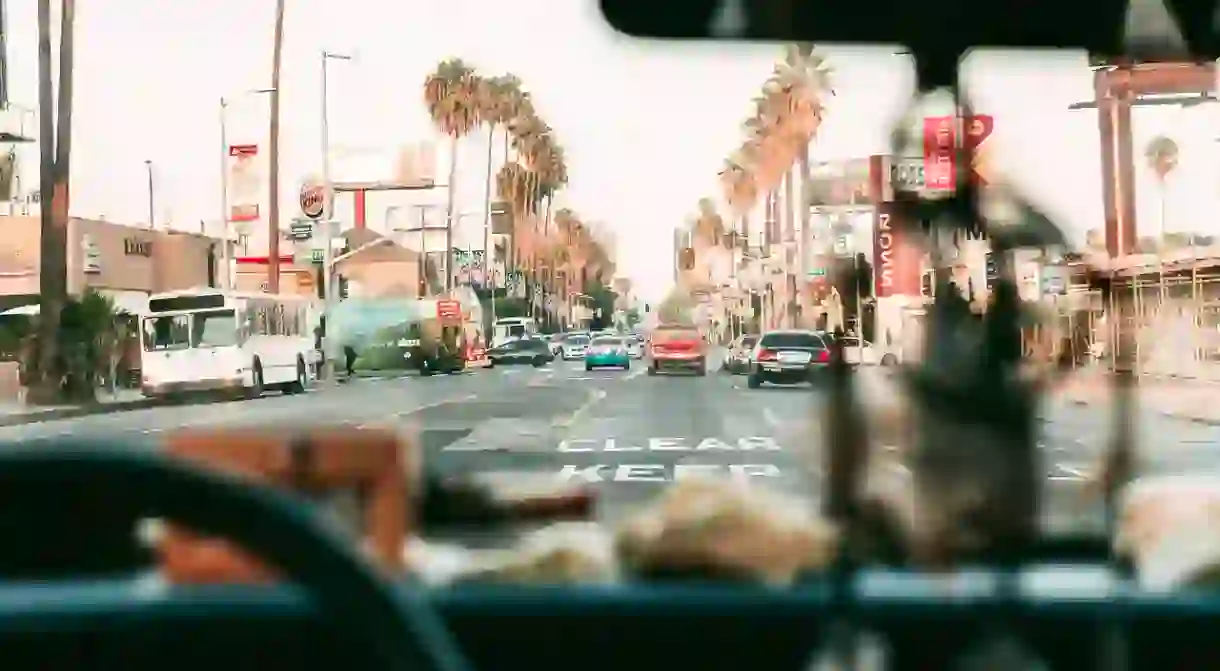The 9 Best Non-Fiction Books About Los Angeles

Los Angeles is a city that has inspired many literary classics. But in reality, the city has just as compelling a history as any fictional account of it. Each of these books explores a different perspective of that diverse and ongoing narrative. While this is by no means an exhaustive list, the books that follow will offer a distinct insight into the aura of LA, one of America’s most storied cities.
‘City of Quartz: Excavating the Future in Los Angeles’
Urban theorist Mike Davis charts the geopolitics and diverging social forces that shaped the rise of Los Angeles as both utopia and dystopia. City of Quartz spans the 20th century, offering incisive and opinionated takes on LA’s social history and particular form of urbanism. Unflinchingly Marxist and decidedly pessimistic, Davis deconstructs the ‘sunshine and noir’ of LA from the vantage point of the 1990s when the crest of the larger-than-life ’80s, a time when LA boomed seemingly ad infinitum, finally fell. Davis rails against the enduring influence of a discriminatory Catholic Church, rapidly accelerating gang violence begetting an overzealous police force, and panoptic, increasingly privatized public space. To counter the sunny stereotype of LA in the collective mind’s eye, Davis’s book is a shadow history of the city.

‘Los Angeles: The Architecture of Four Ecologies’
Architect Reyner Banham turns his eye on how the organic and constructed environments of the city form several ecologies that drive the ways Angelenos relate to the city and each other. In this upbeat and amorous view of the city, Banham examines the discrete ecosystems of the beach, the freeways, the flatlands and the foothills, and explores how these environments operate in concert to form LA’s urban personality – notably decentralized, with freewheeling mobility for a heartbeat.

‘Los Angeles: Portrait of a City’
This vivid Taschen tome is as visually satisfying as it is informative; a sprawling portrait of the making of LA. Sourced from historical archives, museums and private collections, Los Angeles: Portrait of a City offers a top-notch visual history chock-full of excellent photography and ephemera from 1892 all the way to 2005. Topical essays by esteemed California historian Kevin Starr, LA Times book editor David Ulin, and cultural anthropologist Jim Heimann offer context and insight in recounting narratives that have shaped the city.

‘Golden Dreams: California in an Age of Abundance, 1950-1963’
From his comprehensive eight-volume series Americans and the California Dream, historian Kevin Starr explores the economic, social, and cultural forces that influenced the post-war boom of California, charting the beginning of the state as we know it today. This particular volume pays attention to the development of LA as super city amid broader examinations of the suburbanization of California, the Silent Generation, the Beats and the enduring influence of Zen Buddhism, Hollywood’s Rat Pack, and the establishment of the University of California system. For a long and ambitious undertaking, the book is concise and spirited, making it a pleasure to read.

‘An Empire of Their Own: How the Jews Invented Hollywood’
Neal Gabler authors the history of how Jewish immigrants – Fox, Laemmle, Mayer, Zukor, and the Warner brothers – shaped the motion-picture industry during Hollywood’s Golden Age. Despite attempts to peddle idealized national narratives with good, Christian nuclear families at their center – the America these filmmakers wanted to belong to – the films of early Hollywood betray the cultural politics of their historical context, including ethnic prejudices, racism and class contention in America. In interrogating the motivations of the mythmakers of Hollywood, readers gain insight into the inner workings of the American dream.

‘Always Running: La Vida Loca: Gang Days in L.A.’
A stunning firsthand account of gang life in East LA, Luis J. Rodriguez’s memoir recounts one man’s struggle on these city streets. Growing up amid a cycle of violence, Rodriguez was swept up into the dominant gang culture in his neighborhood. Sometimes brutal, but ultimately uplifting, Always Running is a personal history of how Rodriguez came into and then fought to extricate himself from his circumstances through education and creative expression. Rodriguez is now an award-winning author and poet.

‘The History of Forgetting: Los Angeles and the Erasure of Memory’
Norman M. Klein blends fact and fiction as he takes readers on an ‘anti-tour’ of Downtown LA, profiling the experiences of Vietnamese immigrants, postulating about Walter Benjamin’s take on LA if he were a local, and touring cyberspace as the city’s ultimate suburb. With each exploration, Klein suggests that LA is the product of continual reinvention in the face of urban ebb and flow, from aging infrastructure and forgotten districts to strategic urban renewal and gentrification. Each reboot is accompanied by a distinctly self-aware recasting of an area’s story.

‘Counter Intelligence: Where to Eat in the Real Los Angeles’
For many foodies, LA is an unparalleled paradise. LA Weekly columnist Jonathan Gold released a roundup of 200 detailed reviews that offers the most complete guide to eating in the city. From inexpensive local lunch counters to the mom-and-pop diamonds in the rough, Gold catalogs the best cheap eats in the city for anyone who craves authentic food from LA’s culinary melting pot. Sink your teeth into the best cuisine the city has to offer from Armenian to Cantonese, from Cuban to Persian, Korean and Thai and much more. Don’t read this hungry.

‘L.A. Bizarro: The All-New Insider’s Guide to the Obscure, the Absurd, and the Perverse in Los Angeles’
Anthony Lovett and Matt Maranian’s gonzo guidebook offers a weird-and-proud view of LA. From strange eats to sexy sideshows, creepy museums, pet cemeteries, S&M furniture stores and dive bars galore, explore the nooks and crannies of LA’s vaudevillian side. Lovett and Maranian’s unabashed curiosity for the off-kilter, whimsical and perverse will tantalize visitors and locals alike as they peep down the rabbit hole of the oddball underground of the city. Irreverent firsthand accounts are accompanied by colorful original photographs for an up-close-and-personal read.














